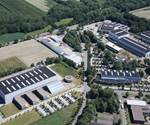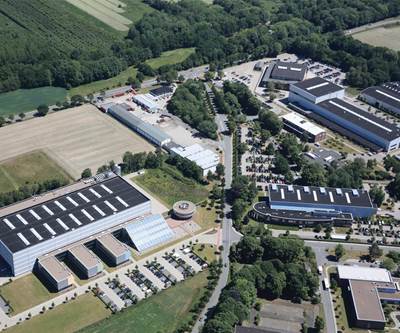CTC’s CEO on digital manufacturing for composites
The Composite Technology Center (Stade, Germany) advances composites production and sustainability through Industry 4.0 working groups.
Prof. Dr. Axel Herrmann is not only the CEO of the Composite Technology Center (CTC) in Stade, the heart of Germany’s carbon fiber composites CFK Valley, he is also CTO of the CFK Valley e.V. trade association, director of the Faserinstitut Bremen (FIBRE) and part of the team behind the ECOMAT materials technology development lab, also located in Bremen, Germany. Herrmann has helped to create a unique entity in the CTC, one where aerospace and nonaerospace applications benefit from continued innovations in composites. His continued vision for CTC provides leadership for its mix of talented engineers and technicians to push composites innovations in design, material development and reuse, processes, assembly, recycling and digital manufacturing. Speaking of where CTC’s efforts are headed currently, Herrmann notes, “Composites can no longer compete only on performance. They must also offer superior production and sustainability.”
“When we founded the CTC in 2001,” Herrmann continues, “our vision was to achieve more optimization in composites manufacturing. We have done this, installing flowlines like in the automotive industry and various types of automation. Now, we look to the next step, to regulate the process.” Herrmann notes that, today the process is only steered, “we don’t have complete control.” He explains that to achieve full control, “we need to measure a lot of parameters and then give this data to predictive controlling systems. These systems alert that you have a deviation in the part production process and you may be able to alter a later process step to reduce this deviation, rather than having to repair or discard the part. We then can go back into the process where the part deviation occurred and change the parameters to prevent this error in the future. Thus, at the end of production, we get only quality parts.”
Herrmann relates that he completed an analysis of the RTM process and identified more than 200 parameters. “We need to measure and control all of these parameters,” he says, “and we must also understand possible interactions and the resulting impacts. We need to learn so much more about how to collect and use this data in order to achieve predictive control.”
However, some of this education can be achieved through computer simulation and modeling. “We need to simulate all of our processes,” Hermann asserts. “In the past, we didn’t do this as much. But now we need to learn how to measure all of the process parameters and understand the interactions, so the modeling is necessary. We have a lot of work to do.”
The work Herrmann outlines is quite large in scope. Is there an overall plan for this within the CFK Valley organization? “We have decided on a working group,” Hermann responds, “and we are working to develop a plan with milestones.” He notes that the CFK Valley trade association was founded in 2004 because “it was not possible for just one company to do all of the development needed.” Hermann says now there are multiple working groups; for example, one to do simulation, one to do measurements. “The first step is to agree on a standardized definition of what Industry 4.0 is for composites,” he explains. “Then, we will set our initial goals and milestones.”
See also "Composites Technology Center and Plataine partner to create "Factory of the Future".
Related Content
Cryo-compressed hydrogen, the best solution for storage and refueling stations?
Cryomotive’s CRYOGAS solution claims the highest storage density, lowest refueling cost and widest operating range without H2 losses while using one-fifth the carbon fiber required in compressed gas tanks.
Read MoreNovel dry tape for liquid molded composites
MTorres seeks to enable next-gen aircraft and open new markets for composites with low-cost, high-permeability tapes and versatile, high-speed production lines.
Read MoreProtecting EV motors more efficiently
Motors for electric vehicles are expected to benefit from Trelleborg’s thermoplastic composite rotor sleeve design, which advances materials and processes to produce a lightweight, energy-efficient component.
Read MoreThe state of recycled carbon fiber
As the need for carbon fiber rises, can recycling fill the gap?
Read MoreRead Next
CW Plant Tour: Composite Technology Center, Stade, Germany
A cornerstone of Germany’s CFK Valley, CTC pushes composites forward via automation, recycling, digital thread-based manufacturing and more.
Read MoreComposites end markets: Energy (2024)
Composites are used widely in oil/gas, wind and other renewable energy applications. Despite market challenges, growth potential and innovation for composites continue.
Read MoreCW’s 2024 Top Shops survey offers new approach to benchmarking
Respondents that complete the survey by April 30, 2024, have the chance to be recognized as an honoree.
Read More















.jpg;maxWidth=300;quality=90)










